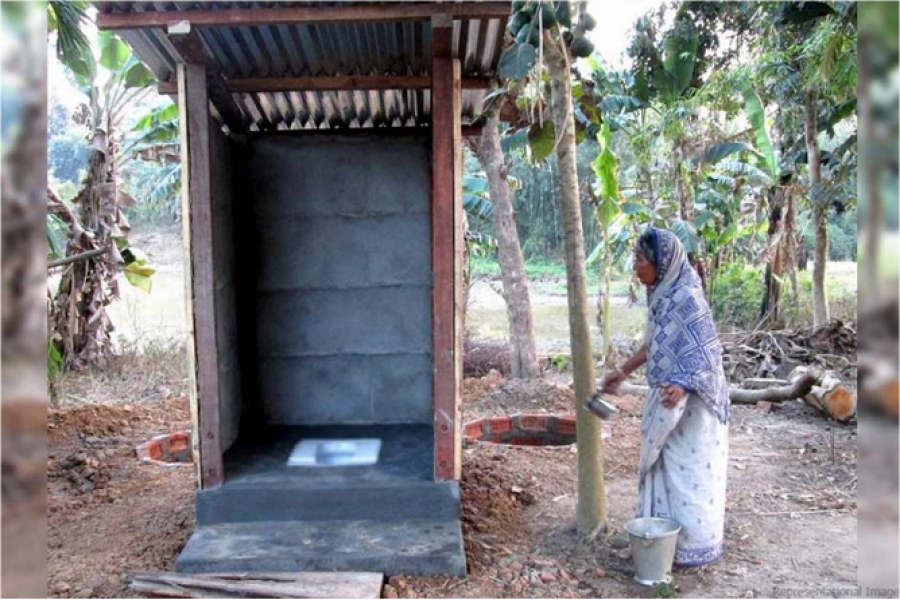The United Nations had in 2010 declared clean drinking water and sanitation to be human rights. The target for the Millennium Development Goals (MDGs) at that time was to halve the number of people living without access to improved water and sanitation services by the year 2015. Then in 2015, the UN adopted the Sustainable Development Goals (SDGs), which sought universal and equitable access to safe and affordable drinking water, and access to adequate and equitable sanitation and hygiene for all by the year 2030.
In 2015, around 29 per cent of the global population lacked safely managed drinking water, while around 61 per cent did not have access to a safely managed sanitation services.
According to the World Bank (WB) estimates, an amount of $114 billion per year is required for extending safely managed water and sanitation services to these people over the period 2015-30.
The water supply and sanitation (WSS) sector has remained heavily subsidised worldwide for decades, whereas effective pricing plays a critical role in the providers' ability to deliver quality services. Yet, little attention has been paid to how existing pricing structures and subsidies hinder or help the progress towards SDGs.
In this backdrop, the WB has recently published a report titled 'Doing More with Less: Smarter Subsidies for Water Supply and Sanitation' highlighting the subsidised nature of the sector and how it can be made smarter. The report explores the question of how the scarce public resources can be utilised more effectively for achieving universal access to WSS services.
The report defines subsidy as a subset of funding flows between governments, service providers and customers. It occurs when a user pays less for a product than the provider's cost. The deficit is covered by a third party like the government or future generation.
Globally, subsidies worth $320 billion are provided each year in the WSS sector. The rationale cited for subsidising WSS services include: advancing equitable access to affordable services, and harnessing positive externalities associated with these services. Based on an analysis of WSS subsidies around the world, the WB has put forward three key messages for remedial actions, which are detailed below.
The first message says, the current WSS subsidies tend to be pervasive, expensive, poorly targeted, non-transparent and distortionary; and they often fail to achieve their objectives due to poor design.
The second message claims that the prevalent poor performance of WSS subsidies can be avoided, because new knowledge and technologies make it possible to subsidise at less cost with more benefit. In fact, well-designed subsidies can serve as critical policy instrument that can help achieve objectives efficiently and effectively, thereby avoiding adverse impacts. Five key questions to be considered for improving efficacy and efficiency of subsidies are: context, policy objectives, target services and/or populations, funding mechanism, and effectiveness cum efficiency of subsidy design.
The third message of the WB study states that for reforming subsidies successfully, a subsidy reform package of four complementary elements is required. These are: complementary policy mechanisms; building supportive political coalitions; a communications strategy; and an exit strategy, where applicable. The policy mechanisms should be used to complement subsidies with the goal of improving access and affordability for the poorest segments of society. A strategy to foster supportive coalitions and mitigate the impact of opponents also should be developed while designing reforms and implementation plans. The professionals should plan and implement a communications strategy before, during, and after reform implementation. And lastly, an exit strategy can be a crucial component in any subsidy reform package, especially when it is intended to be of short-term duration.
Dwelling on Bangladesh, the report says that the government spends huge amounts of subsidies for supplying water at the subscriber level. According to the WB report, 95 per cent of supplied water is subsidised. But the richer segments of population benefit more from this subsidy compared to the poorer segments. In fact, about 32 per cent of the subsidies spent for water supply and sanitation in Bangladesh each year go to the richest 10 per cent of the population. On the other hand, the poorest 10 per cent families get only 2.5 per cent subsidies. Similarly, half the subsidies benefit the richest 20 per cent population, while the poorest 20 per cent receive only 4 per cent subsidies.
The World Bank has therefore emphasised spending subsidy based on fairness and transparency.
With regard to wastage of WSS subsidies among 10 low and middle income countries of the world, Bangladesh has been ranked 5th by the WB study. Niger remains at the top of the list, where 70 per cent subsidies benefit the richest 10 per cent of the population. Uganda has been ranked second, as its richest 10 per cent receive 69 per cent of the subsidies.
Uganda's status is even worse than Bangladesh in terms of subsidy wastage. Ironically, 41 officials of Chattogram WASA recently visited Uganda for learning from her water supply management experience, and Uganda's National Water and Sewerage Corporation is working as consultant for the Tk 18 billion 'Chittagong Water Supply Improvement and Sanitation Project'.
Experts say subsidy is provided against the price of water in Bangladesh. However, the piped water supply mostly reaches the affluent segments of society and they get maximum opportunity to consume more water.
The poorer segments, especially those living in the slums, do not get sufficient water. They mostly use water supplied through illegal connections. For this reason, they have to pay more than twice the market price for buying water.
Various projects and programmes are undertaken in Bangladesh for ensuring supply of pure drinking water and sanitation facilities for different segments of the population. The backward segments are expected to benefit more from these compared to the affluent ones.
But the reality, as reflected in the WB report, seems to be at odds with the stated goals of these projects.
Dr. Helal Uddin Ahmed is a retired Additional Secretary and former Editor at Bangladesh Quarterly.


